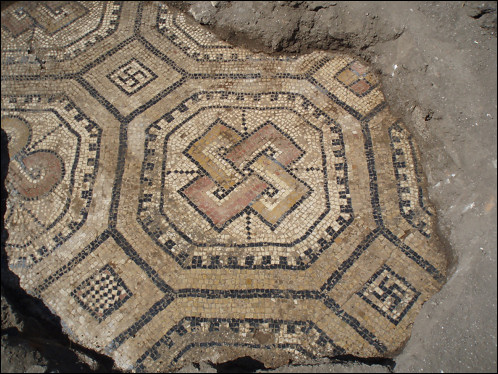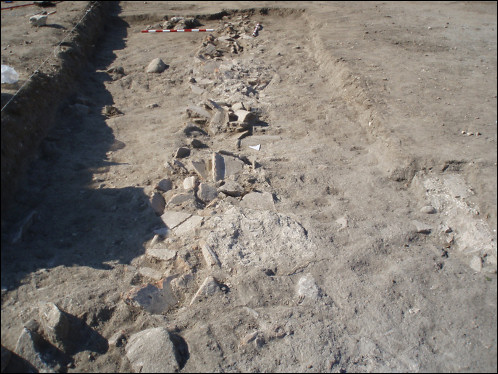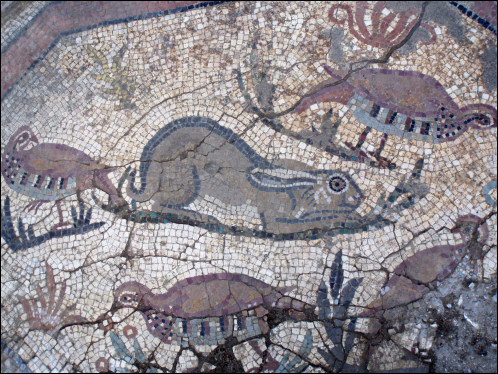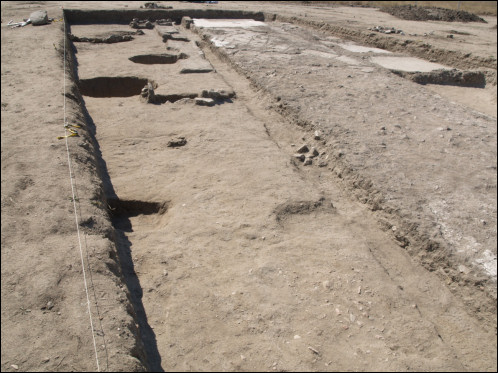
During the year there have been two successive campaigns that have resulted in the opening of about 400m2 (4,305ft2). The second of the two campaigns, which began in early September, has resulted in the discovery of a new polychrome mosaic with a geometric pavement (serving as a corridor on the west side of the residential complex found so far). We have seen, starting from the corridor, there are at least two rooms to the west as well, and they are also decorated with mosaic floors.
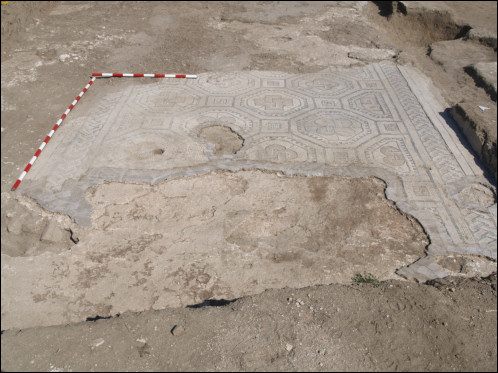
This is an image of a geometric mosaic that decorates the corridor floor. We can see how it was made of polychrome motives, most of them octagons, generating squares in their union. This mosaic was affected by the intrusion of plowshares (farm equipment), it must be noted that these pavements are only 30 cm (12 inch) from the surface.
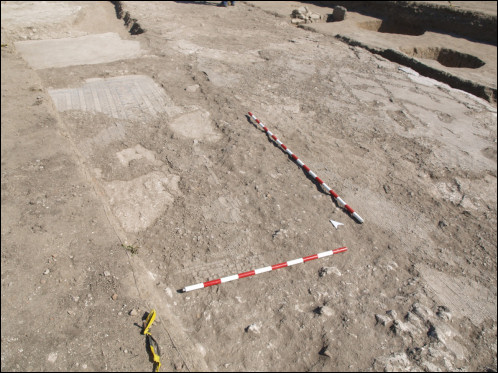
In this picture we can note the corridor (orientated to the West) and the rooms which are connected to it; all of them decorated with mosaic pavements. On the right (East direction) we can see how the plowshare has destroyed a part of the geometric mosaic that covers the corridor.
Also, as in previous seasons, we have seen how the low empire settlement period is subsequently exploited for different uses. Thus, we have documented several burials from both Visigothic and medieval times: these burials buried the bodies in supine position, altering or destroying the villa鈥檚 structures.
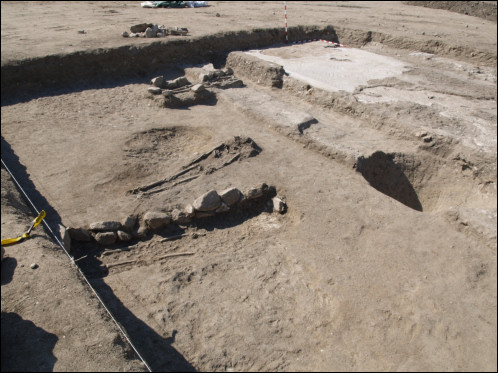
Several burials, with and without grave structure, that have been documented durring this last campaign. You can see how they were made on the structures and levels of the Late Empire Villa.
Other elements that have been documented in this phase of excavation are large negative structures with a circular plant and concave development. We think that they could correspond to silos-dump with a medieval chronology (XI century). These structures are then amortized as household waste dumps, most of the ceramics found there belong to the kitchen.
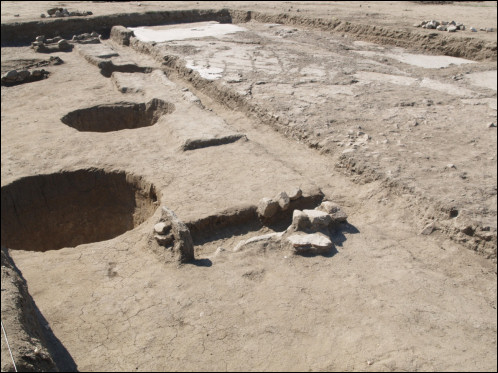
In this picture you can see round structures that break through the Late Roman Empire Villa, same as the burials.
In addition to the excavation itself, one of the tasks that matters most to the archaeological team is the conservation of the different elements documented. For example, the mosaics (which are sensitive surfaces due to alterations by weather and farming equipment) are treated to prevent degradation from one year to another.
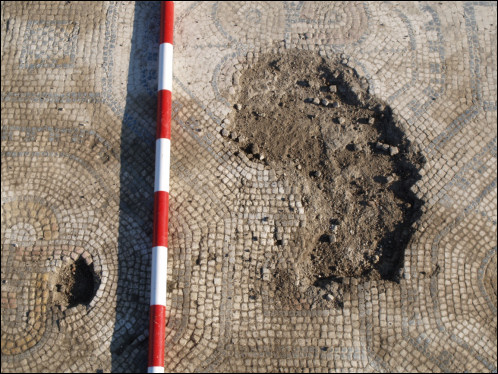
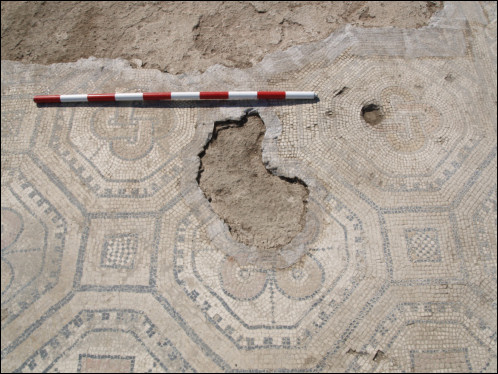
In these pictures you will notice a break in the mosaic pavement (first pic), and how it looks after treating it (second picture).
Finally, after finishing the excavation process and having made various documentations (photography, mapping, surveying and also the excavation notebook) we proceeded to cover the remains with a geotextile layer. After that we鈥檒l deposit about 20cm (8 inches) of washed sand on top of it. In those areas, where there are mosaic floors, we increase the volume of sand to avoid disturbances so those pavements remain in good condition until the following campaign.
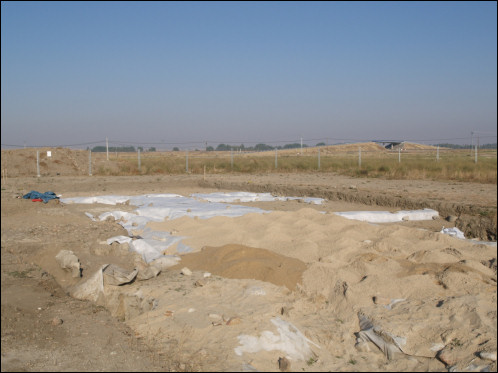
This is the how we cover the archaeological remains; first with geotextile, a permeable fabric which, when used in association with soil, has the ability to separate, filter, reinforce, protect, or drain, and with we can protect the structure we鈥檝e discovered.
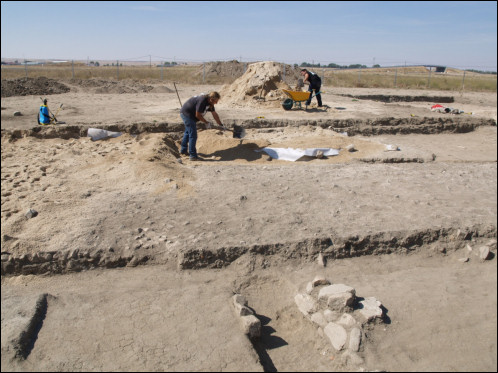
We use a 20 cm (8 inch) layer of washed sand to cover the geotextile and protect the site until the musealization of the villa.
Translated by Lara M. Moreda
Edited by Andrew B. Greeves
Edited by Andrew B. Greeves



